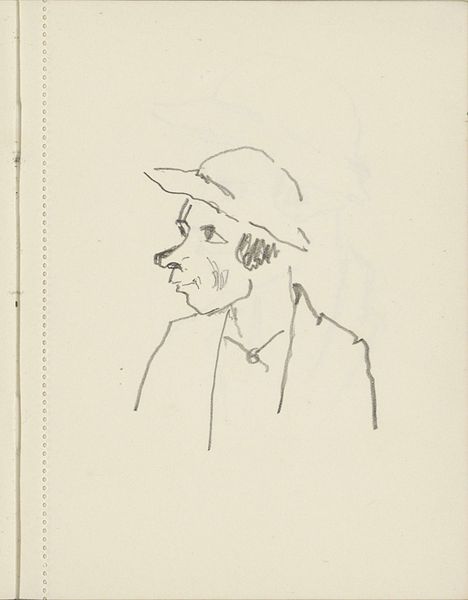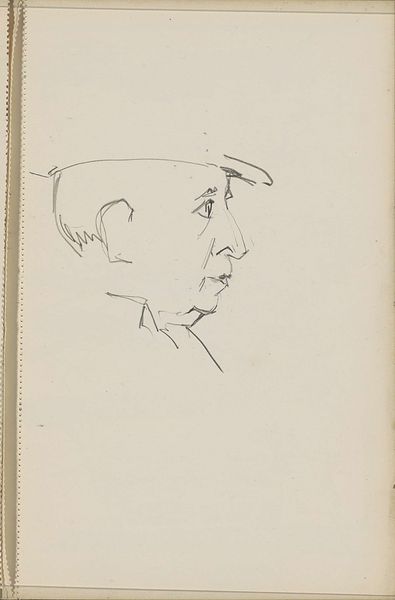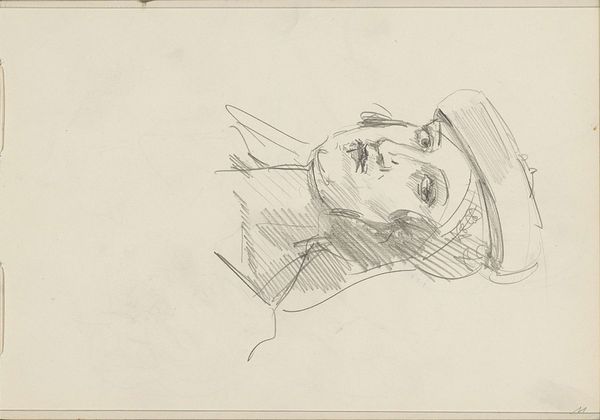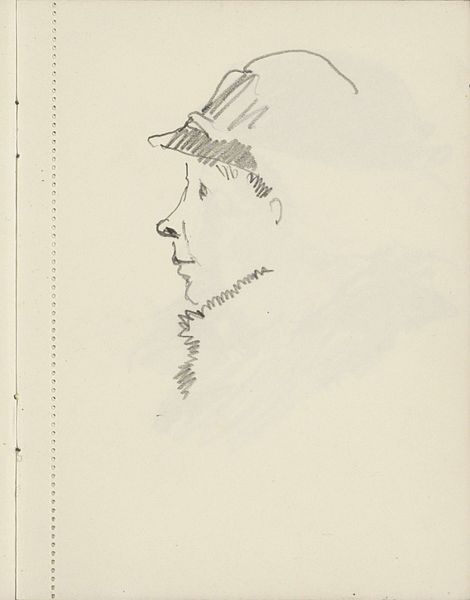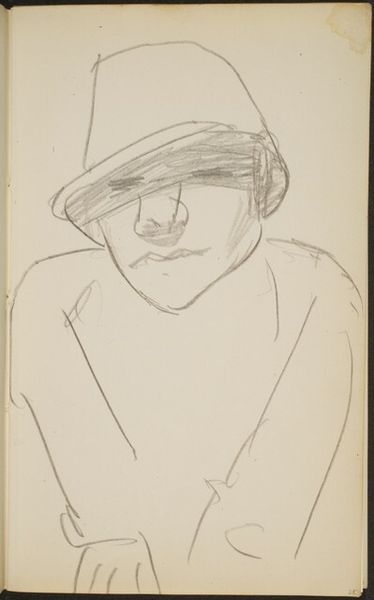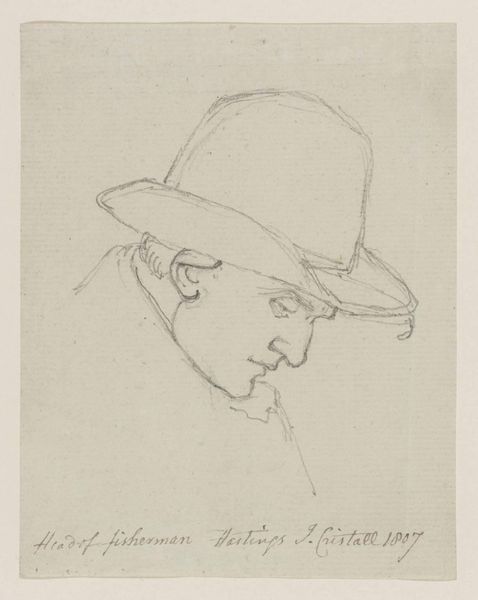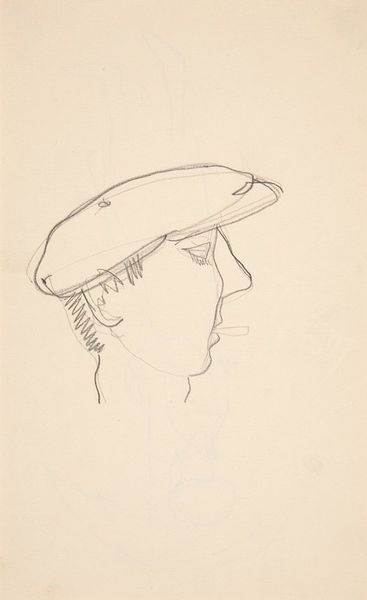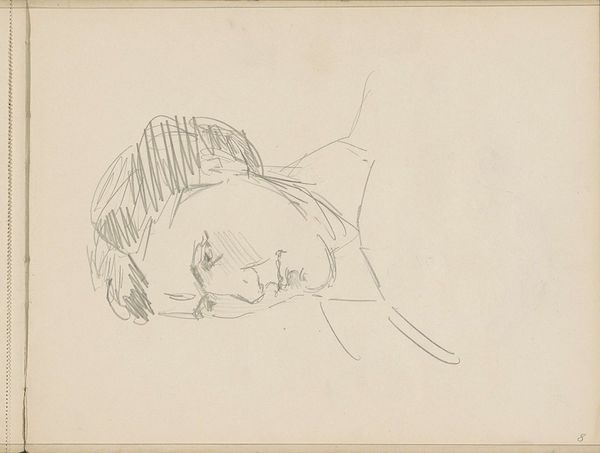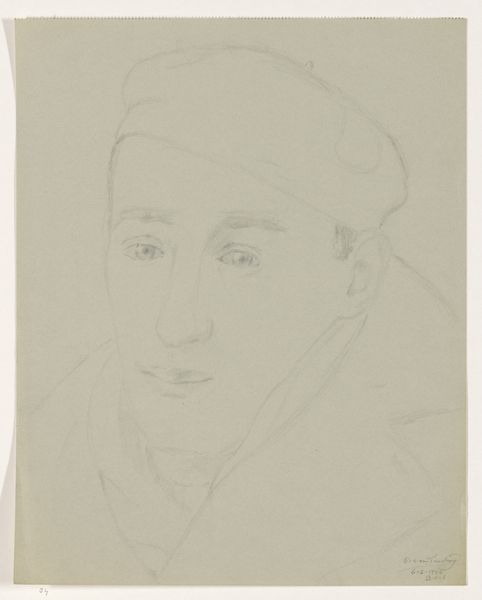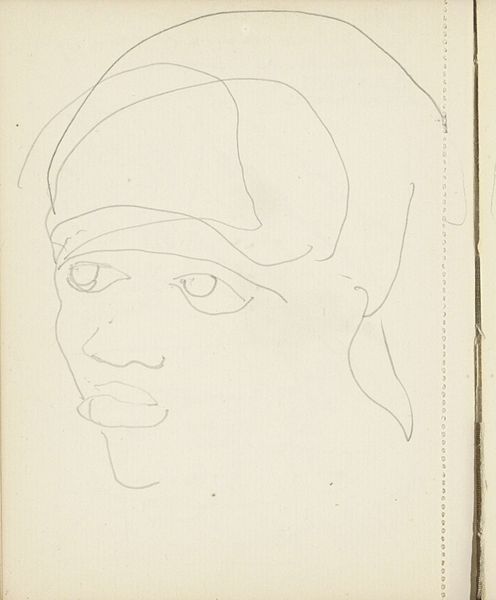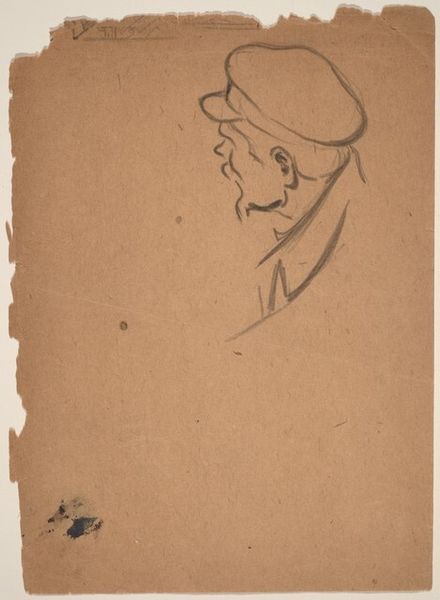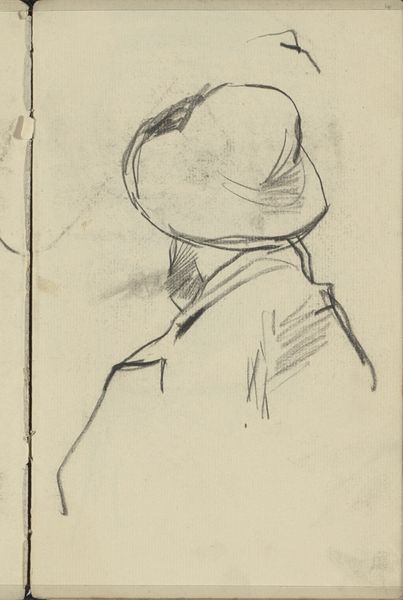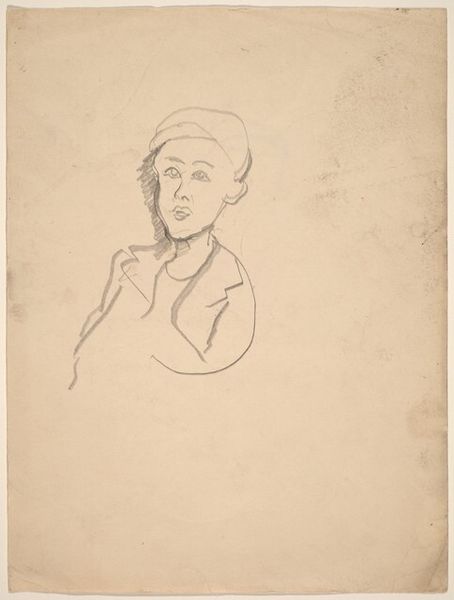
Copyright: Rijks Museum: Open Domain
Curator: Here in the Rijksmuseum we have Cornelis Vreedenburgh's pencil drawing, "Kop van een vrouw met een hoed," dating from around 1890 to 1946. What strikes you first about it? Editor: Immediately, it's the intimacy of the piece. The sketchiness gives the feeling of catching a glimpse, an unposed moment. The light pencil work suggests transience, like a thought quickly captured. Curator: That feeling of immediacy makes sense. Vreedenburgh's work often captured fleeting impressions, drawing from the aesthetic ideals of impressionism. There is also a practical side. Pencil sketches allowed artists to quickly record images from the world around them for later development into finished pieces. Editor: Right, it gives off that sense of “jotting things down,” especially with what looks like a page from a sketchbook, complete with perforated edge on the side. This woman wearing a hat… it’s intriguing to consider her social position. Head coverings during this period marked class, religion and social expectations regarding gender and morality. Curator: Precisely. Hats, especially at the turn of the century, were potent symbols of status and identity, which became further democratized in the early 20th century. It’s worthwhile to consider if this is simply a study or perhaps an early portrait for a more finished piece, or maybe even the artist’s way of confronting the social expectations imposed on women? Editor: That framing is important because art made during this era, by both male and female artists, became key for articulating ideas around womanhood in relation to class and expectations. Do you find the angle significant? Why render her in profile? Curator: I would say this angle emphasizes the distance between subject and artist, especially for someone creating from the canon of impressionism. From a modern viewpoint, the use of profile adds a layer of depersonalization. Are we meant to know this woman intimately or simply observe her? Is she an archetype? Editor: Perhaps all of the above. Looking closely, I can now detect that it’s a self-portrait! Knowing that, the level of abstraction takes on a whole new dimension. The ambiguity and loose style become a means of eluding easy categorization, disrupting conventional ideas of female identity at that time. Curator: That's a potent reading. Seeing it through the lens of social expectations makes the casualness of the sketch seem much more deliberate. Editor: Yes, Vreedenburgh’s work provides a fascinating case study into the art-making of an era of vast transformation in art and broader society, reminding us that images and identities have always been socially negotiated. Curator: It’s fascinating how much a seemingly simple sketch can tell us.
Comments
No comments
Be the first to comment and join the conversation on the ultimate creative platform.
